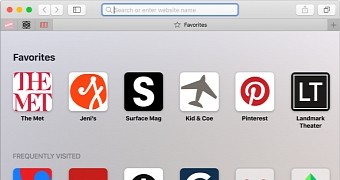The death of Adobe's Flash has been a long one. At one time, the product was seemingly ubiquitous on the web, but as Steve Jobs noted in 2010, it has one of the worst security records of its time. In fact, Apple was among the first to lead the charge on killing off Flash, starting with its refusal to support Adobe's multimedia product on the iPhone.
Fast-foward to today, when Apple's latest Safari Technical Preview for macOS removes Flash support completely. Indeed, that means that when the next version of Safari ships, there won't be anymore Flash.
Adobe originally promised to phase out support for the product by the end of 2020, and browser-makers followed suit. In fact, in browsers like Microsoft Edge and Google Chrome, it's been disabled by default for some time. Both companies, however, are making a similar promise to eliminate the product completely by the end of the year.
- Flash Player Announcement. ATTENTION: Important Changes to Extended Support Release. The Extended Support Release was originally created to help minimize the time IT administrators spend certifying a new Flash Player release, by restricting the number of changes introduced in a given release to only security changes and critical functional fixes.
- Safari no longer supports most web plug-ins. To load webpages more quickly, save energy, and strengthen security, Safari is optimized for content that uses the HTML5 web standard, which doesn't require a plug-in. To enhance and customize your browsing experience, use Safari extensions instead of web plug-ins.
- Apple Safari version 14, released for macOS in September 2020, will no longer load Adobe Flash Player or play Flash content. Please visit Apple’s Safari support for more information. For Mac OS X 10.11, macOS 10.12, and later Open Safari, and choose Safari Preferences.
- Apple Safari version 14, released for macOS in September 2020, will no longer load Adobe Flash Player or play Flash content. Please visit Apple’s Safari support for more information. For Mac OS X 10.11, macOS 10.12, and later Open Safari, and choose Safari Preferences.
Safari doesn't support say webm and there could be other formats too. If the website has really old infrastructure, still there is another alternative to Flash Player. Develop menu → User Agent.
It's unclear when the next version of Safari will ship. Perhaps Apple might wait for the next version of macOS, which will be out this fall. Obviously, the Cupertino firm will still ship the browser to older versions of the OS though, even if it lines up the release with an OS release.
Effective with the ADP Workforce Now Spring 2021 Release, ADP no longer supports Internet Explorer 11 or the legacy Edge browser (versions 78 and below). Any user attempting to log in to this application and perform any transactions on these browser versions will be blocked.
Your ADP service is supported or certified on the following browsers and operating systems. Certified means that the browser or operating system has been tested in detail through functional test cases and user interface scenario compatibility. Supported means that the browser or operating system has been tested for key functionality to ensure that critical features are working as designed.
·ADP certifies Microsoft® Edge based on Chromium (latest version) on Microsoft Windows® 10
·Mozilla® Firefox® (latest version)

–ADP supports Firefox on Microsoft Windows® 10, Apple® Mac OS® Big Sur, and Apple® Mac OS® Catalina.
·Apple® Safari®
–ADP supports Version 13 and higher on Apple® Mac OS® Big Sur and Apple® Mac OS® Catalina.
·Google Chrome™ (latest version)
–ADP certifies Chrome on Microsoft Windows® 10, Apple® Mac OS® Big Sur, and Apple® Mac OS® Catalina.
For optimal performance, ADP recommends you upgrade to the most recent versions of Firefox, Chrome, Microsoft Edge based on Chromium, and Safari 13 and higher. Clients not using the latest versions of these browsers may experience performance and rendering issues.
Pop-up and cookie-blocking software must be disabled. If fire wall software is used, permit inbound and outbound traffic on port 443.
Touch screens are not supported or certified by ADP.

For ADP Workforce Now Enhanced Time & Attendance® (formerly known as Enterprise eTIME) clients, Chrome is a supported browser for Enhanced Time v8.0 only. For Legacy versions of Enhanced Time v7.0 and lower, Chrome is not a supported browser. Please contact your Enhanced Time support team if you have questions or need assistance with version verification.
For the best possible user experience, ADP recommends a minimum screen resolution of 1280 x 800. Screen resolutions smaller than this will still work, but will require horizontal scrolling in some cases.
Minimum Bandwidth Requirements
We are continually working to improve response time and performance in ADP Workforce Now. Your experience will vary based on your hardware, operating system, browser, internet service provider, available bandwidth, and local configuration. Some software, such as your security programs, will also affect response time. Clearing your cache may positively affect performance.
Safari Flash Support Downloads
Updated: February 23, 2021
Safari Flash Support

Comments are closed.